Crocodile Anatomy: What Makes Them Unique
Crocodiles are fascinating creatures known for their huge size and unmatched strength. They are one of the oldest living reptiles dating back to the Mesozoic era. Crocodiles have evolved over millions of years, developing unique anatomical features that make them a fearsome predator.
One of the standout features of the crocodile anatomy is their strong jaw. Their jaw muscles make up almost a third of their total body weight, and they have a tremendous bite force that can crush the bones of their prey. The crocodile’s lower jaw is also hinged, allowing it to open very wide, and their teeth are constantly regenerating throughout their lifetime.
- Another unique feature is the crocodile’s tail. Their tails are muscular and powerful, helping them swim through water with ease. The tail is also used for balance and as a weapon to lash out at prey or predators in self-defense.
- Crocodiles have a heavily armored body with rough, scaly skin that provides protection from predators and the environment. Their tough skin is covered in bony plates called scutes, which act as a shield from any potential threats.
| Anatomical Feature | Crocodile | Alligator |
|---|---|---|
| Jaw Strength | Very strong | Strong |
| Bite Force | Powerful | Strong |
| Tail | Muscular and powerful | Muscular |
| Skin | Rough and scaly | Smooth and scaly |
Crocodiles are amazing creatures with many unique anatomical features that allow them to survive and thrive in their habitats. Their powerful jaws, muscular tails, tough skins, and overall physique make them one of the most fascinating creatures on Earth.
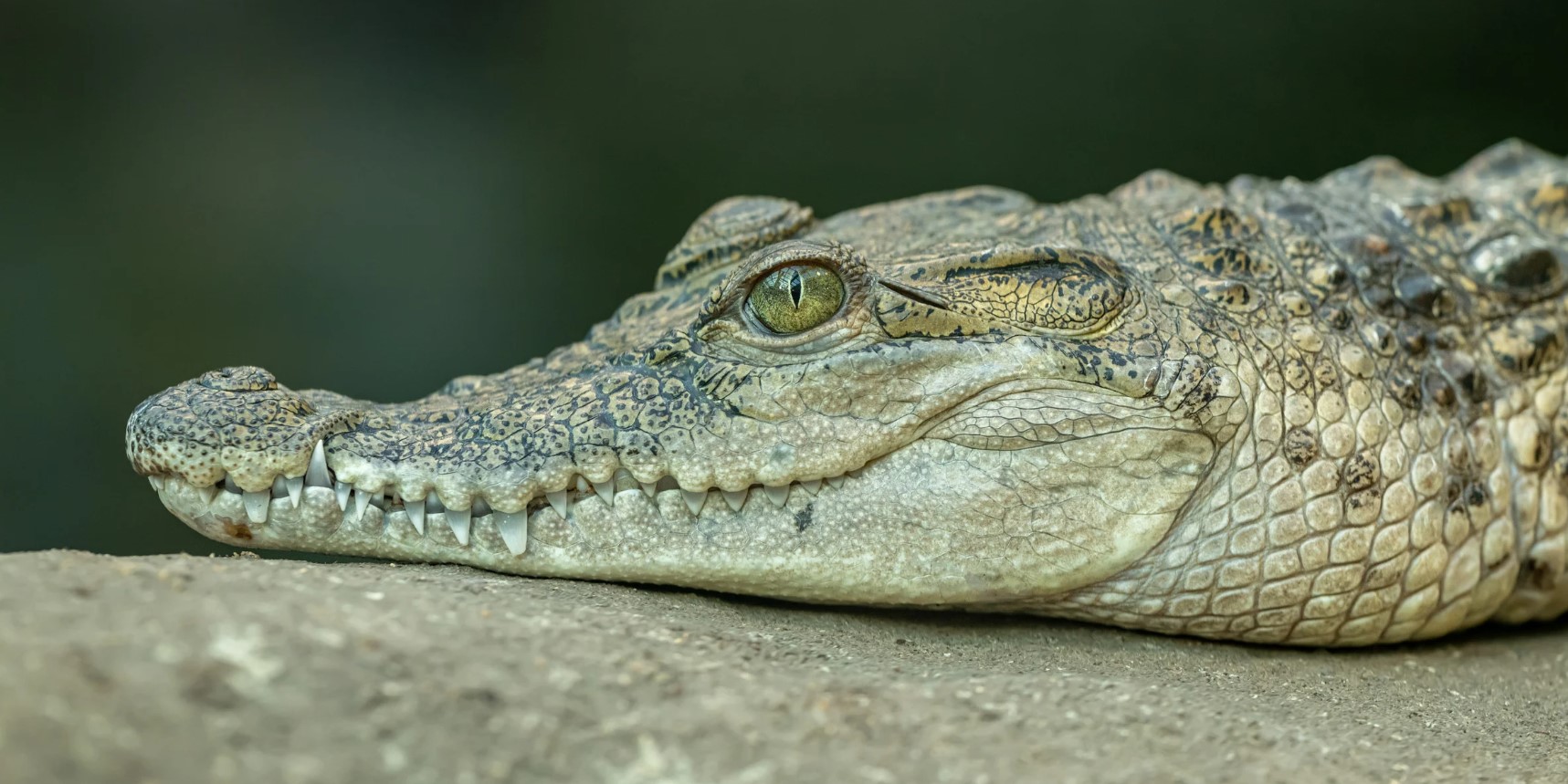
Evolution Of Crocodiles: From Ancient To Modern
Evolution Of Crocodiles: From Ancient To Modern The Crocodile is a jaw-dropping animal admired by many. From their rough textured skin to their sharp teeth, it’s hard not to be fascinated by this reptile. Crocodiles are known to have evolved over millions of years. Let’s take a look at the evolution of crocodiles from Ancient to Modern.
Ancient Crocodiles: Crocodiles first appeared on our planet over 240 million years ago, as far back as the time of the dinosaurs. These crocodiles were not quite like the ones we see today. They had a body shape that was similar to many living species of lizards, were smaller in size and lower down on the food chain. They lived in freshwater habitats and consumed a varied diet, feeding on generally small prey such as insects and small fish.
Modern Crocodiles: Over the years, crocodiles have evolved to adapt to different environments. Modern crocodiles have a similar body shape to ancient crocodiles; however, they are much larger in size. Unlike their ancient counterparts, modern crocodiles have moved into different habitats, including freshwater and saltwater environments. They are also known to have a well-developed sense of hearing, sight and smell, giving them a better advantage while hunting.
Adaptions: Crocodiles have had to adapt to their surroundings to survive. They have developed a unique body with tough scaly skin, which offers security from predators and varies on their habitat. Through evolution, crocodiles have also developed very efficient ways of swimming and hunting, making them formidable predators.
- Conclusion: Crocodiles have been around for millions of years and have evolved through time to the modern-day reptile we know today. From ancient to modern, they have developed a wide range of adaptations to survive different environments, allowing them to become one of the most dangerous and highly respected animals in the world. Understanding crocodile evolution is critical to appreciate the unique animal that has survived for centuries.
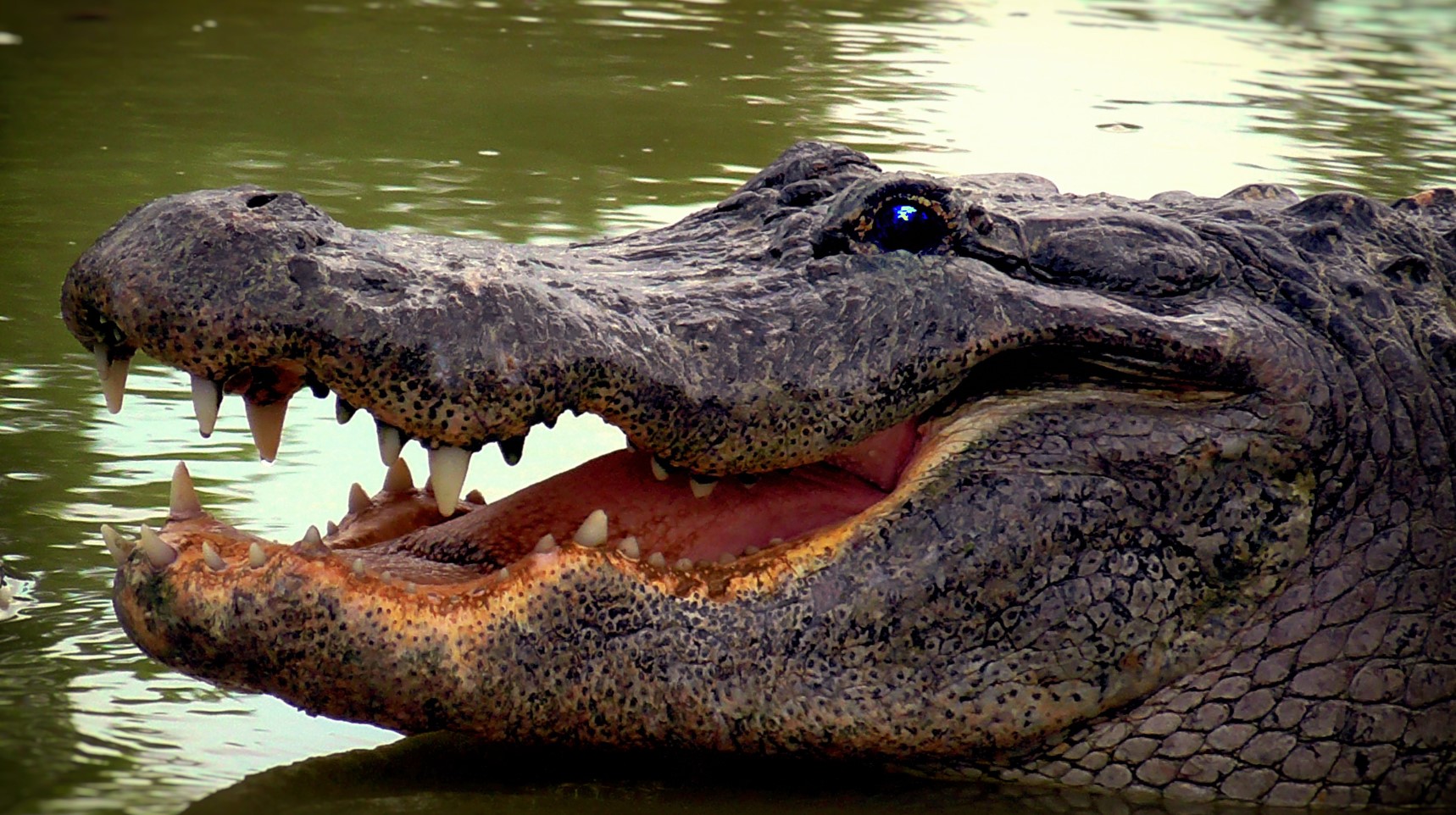
Different Types Of Crocodiles: Saltwater, Freshwater And More
Did you know that there are more than 20 species of crocodiles in the world? Crocodiles are apex predators and one of the oldest reptiles, dating back to 200 million years. These fascinating creatures are found in different parts of the world, ranging from the Americas to Africa, Asia, and Australia. Each species has unique traits and features that make them suitable for their environment. Let’s take a deeper look at the different types of crocodiles:
- Saltwater Crocodile: Known as the largest living reptile, the saltwater crocodile (also known as estuarine crocodile) is found in the waters of Southeast Asia, Northern Australia, and the surrounding islands. They can grow up to 23 feet and weigh up to 2,200 pounds, making them a true predator in their habitat.
- Nile Crocodile: The Nile crocodile is found in Sub-Saharan Africa, in rivers, lakes, and marshes. Like the saltwater crocodile, it is one of the largest crocodile species, growing up to 20 feet and weighing up to 1,650 pounds.
- American Crocodile: The American crocodile is found in Central and South America, as well as the southern part of Florida. They are typically smaller compared to other crocodile species, growing up to 13 feet and weighing up to 1,000 pounds.
In addition to the above, there are several other crocodile species, such as the Siamese crocodile, Philippine crocodile, Cuban crocodile, and more. Each of them has unique physical features, including their size, color, and pattern, that make them distinct from each other.
| Crocodile Species | Size | Weight |
|---|---|---|
| Saltwater Crocodile | Up to 23 feet | Up to 2,200 pounds |
| Nile Crocodile | Up to 20 feet | Up to 1,650 pounds |
| American Crocodile | Up to 13 feet | Up to 1,000 pounds |
It’s important to understand the different types of crocodiles and their habitats to help prevent human-crocodile conflicts. By learning to coexist with these apex predators, we can help protect and conserve them for future generations to come.
Interesting Facts About Crocodiles: The King Of Reptiles
Crocodiles are fascinating creatures that have managed to captivate the hearts of people across the globe. Known as the king of reptiles, crocodiles are apex predators that can be found in freshwater and saltwater habitats. Here are some interesting facts about these amazing creatures that will leave you in awe.
- Crocodiles can live up to 100 years. Unlike most reptiles, crocodiles have a long lifespan, with some species able to live over a century! This is due to their slow metabolism and natural resilience against disease and other illnesses.
- Crocodiles are excellent hunters. With their powerful jaws, razor-sharp teeth, and lightning-fast reflexes, crocodiles are known for their lethal hunting abilities. Their bite force can exceed 3,000 pounds per square inch, making them one of the strongest predators in the animal kingdom.
- Crocodiles are cold-blooded. As with most reptiles, crocodiles are ectothermic, which means that they need to regulate their body temperature by basking in the sun or seeking shade when they get too hot or cold. This is why you’ll often find crocodiles sunning themselves on riverbanks.
| Crocodile Species | Length | Weight |
|---|---|---|
| Saltwater Crocodile | up to 23 ft. | up to 2,200 lbs. |
| American Crocodile | up to 16 ft. | up to 2,000 lbs. |
| Nile Crocodile | up to 20 ft. | up to 1,650 lbs. |
Crocodiles are truly fascinating creatures that have survived for millions of years. These apex predators have captured the imagination of humans and inspired countless myths and legends throughout history. With their incredible hunting abilities, long lifespan, and cold-blooded nature, crocodiles are truly deserving of the title “king of reptiles.”
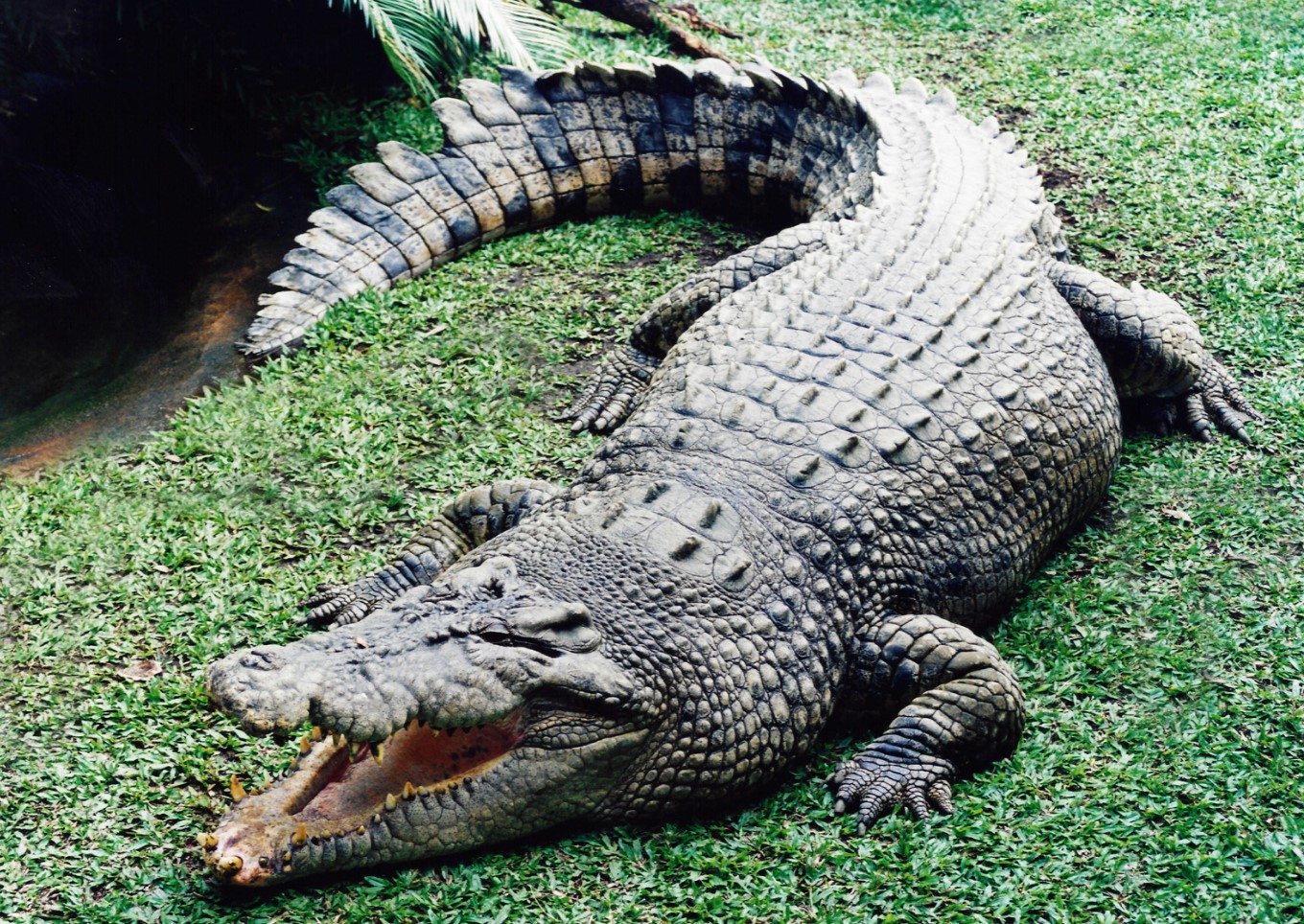
Crocodile Hunting Techniques: How They Catch Their Prey
Crocodiles are one of the most feared creatures in the animal kingdom, and for good reason. Their powerful jaws and sheer strength make them formidable predators that can take down animals much larger than themselves. But how do crocodiles hunt their prey? What techniques do they use to catch their meals?
When it comes to hunting, crocodiles are ambush predators. They lie in wait for their prey, often submerged in the water with only their eyes and nostrils visible. When an animal comes to drink from the water or to cross the river, the crocodile strikes with lightning-fast speed. Using their powerful tails, they propel themselves quickly towards their prey and grab it in their jaws. Once their jaws clamp down, it’s nearly impossible for their prey to escape.
- Crocodiles also have an incredible sense of smell, which they use to locate potential prey. They can smell their prey from long distances and will often travel great distances to search for food.
- Another hunting technique that crocodiles use is called the “death roll”. After capturing their prey, they will roll over and over in the water in order to tear off pieces of flesh to swallow. This is especially effective on larger prey, as it allows the crocodile to consume its meal more easily.
Crocodiles are opportunistic hunters, which means that they will eat just about anything that comes their way. This includes fish, birds, reptiles, mammals, and even humans. In areas where crocodiles and humans coexist, it’s important to take precautions to avoid becoming a crocodile’s next meal. This means staying away from the water’s edge, not swimming in crocodile-infested waters, and avoiding wading in shallow water where crocodiles might be hiding.
| Fact: | Crocodiles have the strongest bite force of any animal in the world. Their jaws can exert up to 3,700 pounds per square inch of pressure. |
|---|
In conclusion, crocodiles are skilled hunters that use a variety of techniques to catch their prey. With their powerful jaws, lightning-fast speed, and keen sense of smell, they’re able to take down animals much larger than themselves. As humans, it’s important to respect these creatures and take precautions to avoid becoming their next meal.
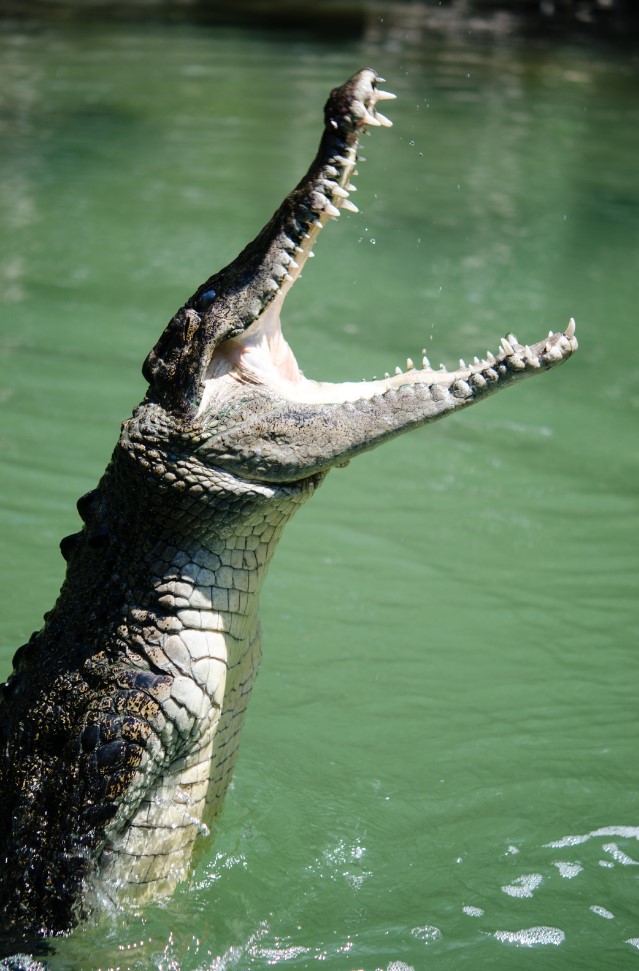
Crocodile Reproduction And Life Cycle: From Birth To Maturity
When it comes to the life cycle of a crocodile, there are several stages to consider. It all begins with reproduction, which is a complex process that involves several fascinating behaviors. Once the eggs are laid, the crocodile embryos develop over a period of several months, before hatching and entering the world as independent creatures. From there, they must navigate the dangers of their environment and learn important survival skills as they grow and mature. Let’s take a closer look at the reproduction and life cycle of crocodiles.
Reproduction
Crocodiles use a range of complex behaviors to reproduce, including vocalizations, courtship displays, and even gifts of food. Once a female crocodile is ready to lay her eggs, she will dig a nest in a suitable location, which can be several feet deep. She will then lay her eggs and bury them in the nest, where they will incubate for several months. Crocodile nests can contain dozens of eggs, and the eggs of different species and locations can have varying shapes, sizes, and colors.
Embryonic Development
Once the crocodile embryos have been laid, they undergo a complex process of development while still inside the egg. Over time, the embryos will develop a range of specialized structures, including a yolk sac for nutrition and an allantois and chorion membrane for respiration. As the embryos continue to grow and mature, they will also develop unique features that are characteristic of their species, such as the sharp ridges on the backs of saltwater crocodile hatchlings.
Hatching and Growth
After several months of incubation, the crocodile eggs will start to hatch. Once they emerge from their shells, the hatchlings must fend for themselves in the dangerous world of their environment. This means learning important survival skills, such as hunting, avoiding predators, and finding suitable territory. Over time, the crocodiles will continue to grow and mature, developing larger and more powerful bodies that are capable of surviving in challenging environments. Eventually, they will reach adulthood and begin the process of reproducing themselves.
In conclusion, the life cycle of a crocodile is a complex and fascinating process, involving reproduction, embryonic development, and growth. By understanding these stages, we can gain a greater appreciation for these amazing creatures and the remarkable traits that allow them to survive and thrive in their environments.
Crocodile Behavior: What You Need To Know To Stay Safe
Crocodiles have been around for millions of years and are known for their aggressive behavior. It’s important for anyone living near or visiting areas where crocodiles are found to be aware of their behavior and know how to stay safe. Here are some things you need to know about crocodile behavior.
1. Territory and Aggression: Crocodiles are territorial animals and tend to be aggressive towards anything and anyone that comes into their territory. This behavior is especially common during their breeding season when they become more aggressive towards other crocodiles, as well as humans.
- During breeding, male crocodiles will often fight with each other for territory, which can result in serious injuries or death.
- Always keep a safe distance from crocodiles to avoid being seen as a threat to their territory.
- Never approach a crocodile hatchling or nest as this can result in the mother crocodile becoming aggressive towards you.
2. Hunting Behaviors: Crocodiles are excellent hunters and are known for their ability to ambush their prey. They will often wait in the water and then attack their prey as it gets closer. This means that anyone near the water needs to be cautious and alert at all times.
- Always be aware of your surroundings when near water where crocodiles may live.
- Never swim in areas where crocodiles are known to be present, especially during their breeding season.
- At night, always use a flashlight to scan the area for crocodiles before entering the water.
3. Communication and Warning Signs: Crocodiles use body language to communicate with each other and to warn potential threats. It’s important to be aware of these warning signs to avoid putting yourself in danger.
| Warning Sign | What it Means |
|---|---|
| Tail Wagging | This means the crocodile is agitated and is warning you to stay away. |
| Hissing | This means the crocodile is feeling threatened and is warning you to back away. |
| Slapping Tail | This means the crocodile is agitated and is warning you to back away. |
By being aware of crocodile behavior, you can help keep yourself and others safe. Remember to always keep a safe distance from crocodiles and avoid approaching their territory or nests. If you do happen to come across a crocodile, be sure to pay attention to their warning signs and act accordingly to avoid being attacked.
Crocodile Conservation: How We Can Protect These Amazing Animals
Crocodiles are some of the most fascinating creatures on the planet. They have been around for millions of years, and their evolution has been both remarkable and astonishing. However, the continued existence of crocodiles is now under threat, and it’s up to us to protect these amazing animals. In this blog post, we will discuss some of the ways in which we can conserve crocodiles and secure their future.
Crocodile conservation: There are many different ways in which we can help to conserve crocodiles. One of the most important is through education. By teaching people about the importance of these animals and their role in the ecosystem, we can help to raise awareness and promote positive attitudes towards crocodiles. This can be done through schools, universities, and other educational programs.
- Habitat conservation: Crocodiles rely on a healthy habitat to survive. We can help to conserve their ecosystem by protecting wetlands, rivers, and other areas where crocodiles live. This can be achieved through habitat restoration, land-use planning, and other conservation strategies.
- Protecting crocodiles from exploitation: Crocodiles are often exploited for their skin, meat, and other parts. We can protect crocodiles by enforcing laws and regulations that limit hunting, trade, and other forms of exploitation. This can be done through legislation, monitoring, and enforcement activities.
Collaboration and partnerships: Another important aspect of crocodile conservation is collaboration and partnerships. By working together with conservation organizations, local communities, and other stakeholders, we can develop effective conservation plans that address the needs of both crocodiles and people. This can include community-based conservation initiatives, capacity building, and other activities that promote sustainable development and biodiversity conservation.
| Conservation strategies: | Examples: |
|---|---|
| Habitat conservation | Wetland restoration, protected area management, land-use planning |
| Law enforcement | Hunting restrictions, trade regulations, monitoring and enforcement activities |
| Collaboration and partnerships | Community-based conservation initiatives, capacity building, stakeholder engagement |
In conclusion: Crocodiles play a vital role in the ecosystem, and their conservation is important for maintaining the biodiversity of our planet. By educating people, protecting their habitat, and limiting their exploitation, we can help to conserve these amazing animals and secure their future for generations to come.
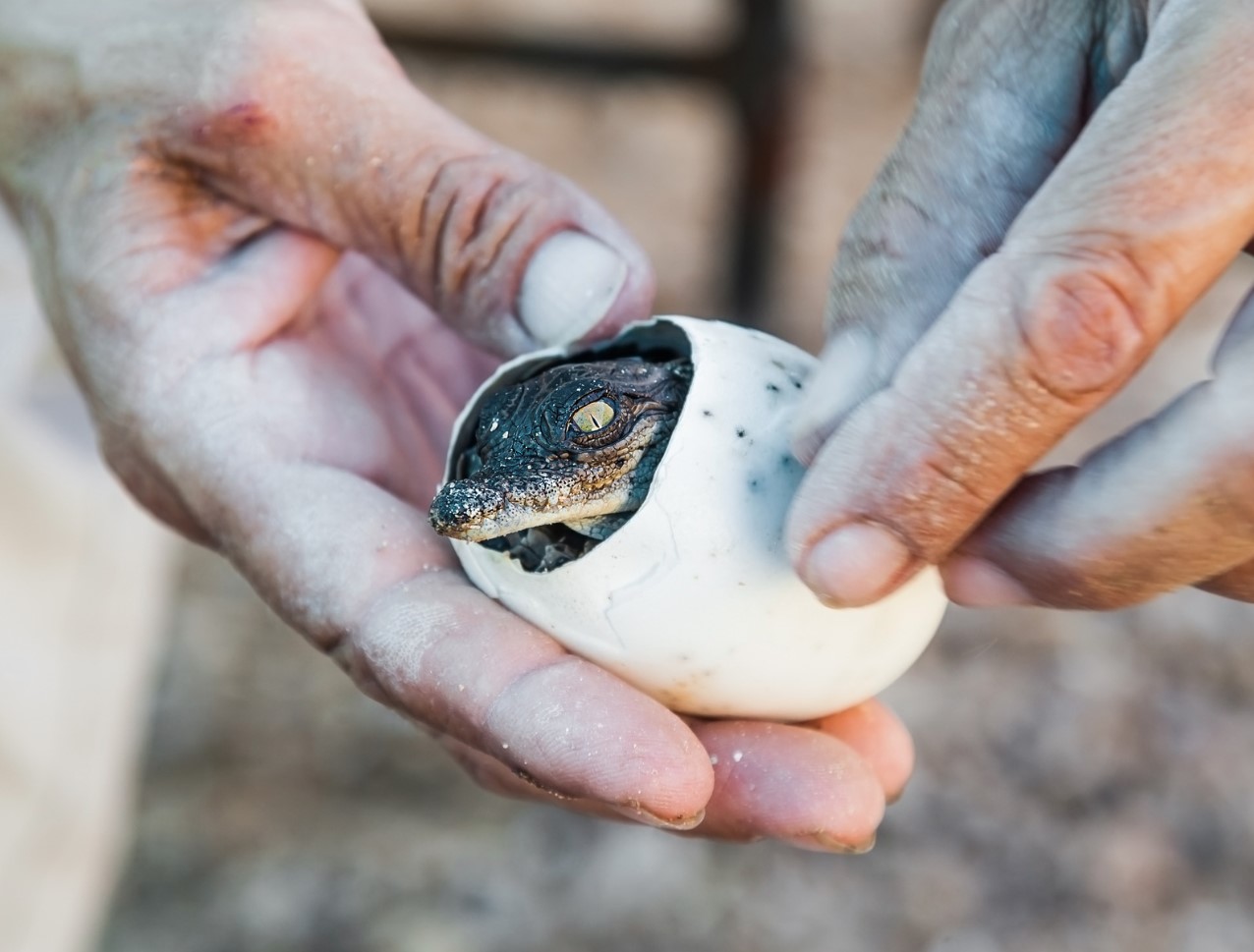
Downside Of Crocodile Tourism: Ethical Considerations
When tourists visit areas where crocodiles reside, there is often the temptation to observe these magnificent creatures up close. Crocodile tourism is on the rise, with many tour operators offering boat rides and guided tours to spot them in their natural habitat. While this can be an exhilarating and unique experience, it’s important to consider the ethical implications of this industry.
One downside of crocodile tourism is the disturbance of their natural habitat. Boat engines and loud voices can disrupt crocodiles’ mating patterns and cause them to flee the area, affecting their ecosystem. Additionally, tourists may leave behind trash and other pollutants that can harm not just the crocodiles but the entire environment.
- Another ethical consideration is animal welfare. Some tour operators may feed the crocodiles to attract them closer to the boats, which can lead to over-dependency on food and alter their hunting patterns. Moreover, overcrowding can cause stress and aggression in these animals, leading to harmful situations for both crocodiles and humans.
- Furthermore, crocodile tourism can perpetuate harmful stereotypes about these animals. People often view them as scary and dangerous, leading to fear and misconceptions about them. By promoting tourism centered around fear-based attractions, such as crocodile wrestling and feeding, these stereotypes only continue to grow.
So, what are some steps we can take to ensure ethical crocodile tourism? Tourists should choose tour operators that value conservation, education, and responsible tourism. Choose trips that prioritize observation at a distance rather than close-up, and follow local rules and regulations that protect the wildlife.
| Pros of crocodile tourism | Cons of crocodile tourism |
|---|---|
|
|
Ultimately, the decision to participate in crocodile tourism rests with the tourists. By understanding the ethical considerations, tourists can make informed choices that protect both crocodiles and the environment they call home.
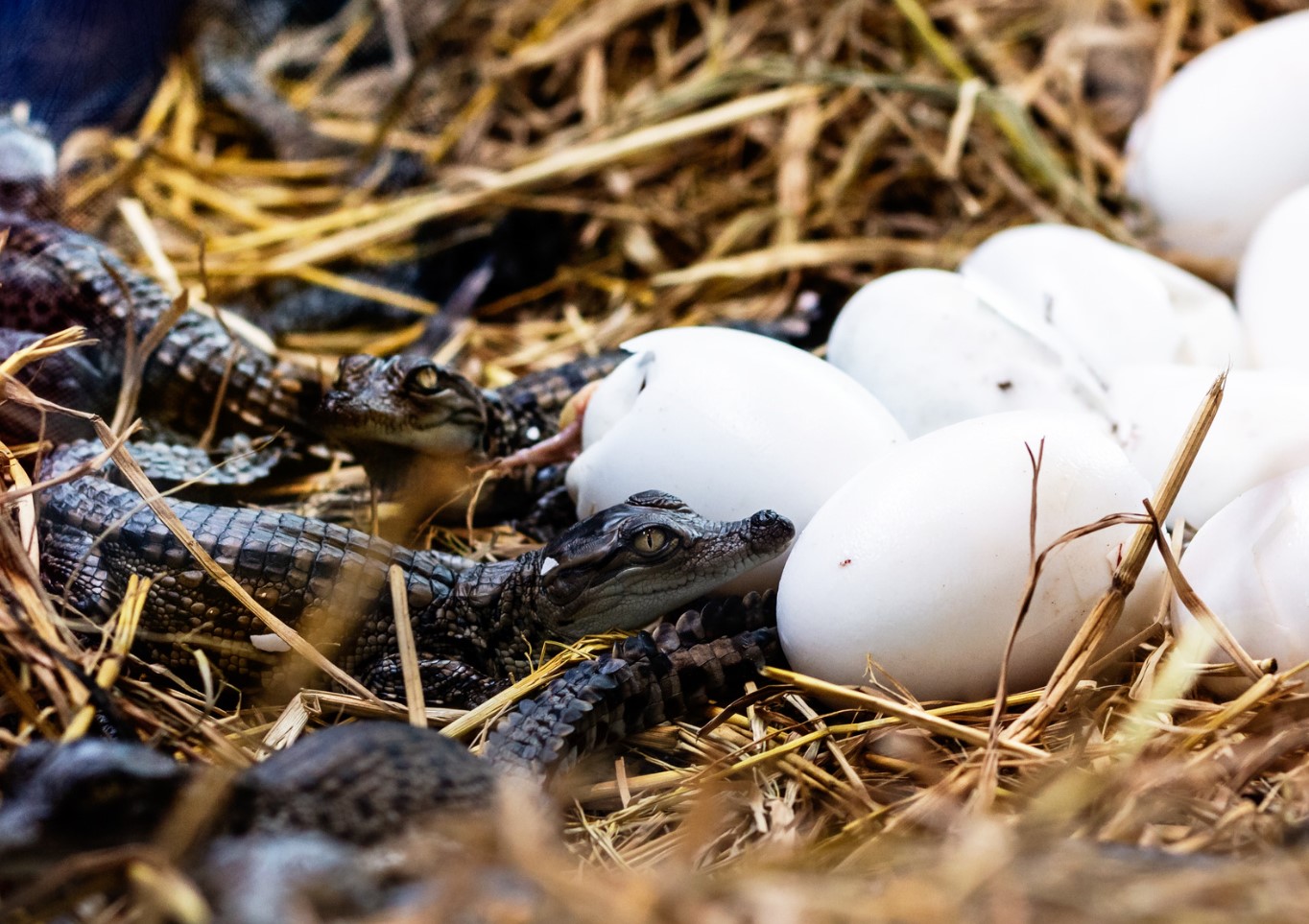
History Of Crocodile Farming: From Skins To Meat
Crocodile farming has been around for centuries, but it wasn’t until recently that it became a lucrative business. Today, crocodile farms can be found all over the world, from Australia to Africa to Asia. The practice of farming crocodiles dates back to ancient civilizations where crocodile meat and skins were used for food, clothing, and protection.
Early Egyptian hieroglyphs show that crocodiles were farmed around 2500 BC. The Egyptians also believed that crocodiles were sacred and often worshiped them. In China, crocodile farming was practiced as early as 500 BC for medicinal purposes.
During the 20th century, crocodile farming gained popularity in the fashion industry. Some of the biggest fashion houses started using crocodile leather to make high-end products like bags, shoes, and belts. This led to an increase in the number of farms in countries like Australia, Thailand, and Indonesia.
| Country | Number of Crocodile Farms |
|---|---|
| Australia | more than 50 |
| Thailand | over 30 |
| Indonesia | over 20 |
Today, crocodile farming is a multi-million dollar industry that supplies not only luxury goods but also meat. Crocodile meat is considered a delicacy in many countries, particularly in Asia. It is also gaining popularity in Western countries as a lean and healthy source of protein. Crocodile products like oil, leather, and bones are also used for a variety of purposes.
While crocodile farming has its benefits, it also has its downsides. One of the major issues is the welfare of the animals. Crocodiles are often kept in small, confined spaces which can lead to stress and aggression. Another issue is the impact of farming on wild crocodile populations. Some experts argue that farming encourages poaching and illegal trade.
In conclusion, the history of crocodile farming dates back to ancient civilizations where crocodiles were revered and farmed for a variety of purposes. Today, crocodile farming is an industry that supplies luxury goods and meat to consumers all over the world. While it has its benefits, it is important to consider the ethical implications of farming and its impact on wild crocodile populations.
Crocodile Farming Vs. Wild Crocodile Hunting: Pros And Cons
Crocodile Farming Vs. Wild Crocodile Hunting: Pros And Cons
Crocodiles are fascinating creatures that capture the hearts and minds of many people. They have been hunted for their meat and skins for centuries, but in recent times, crocodile farming has become a popular industry. Crocodile farming involves breeding crocodiles in captivity and raising them for their meat and skins. Wild crocodile hunting involves tracking and hunting crocodiles in their natural habitat. Both methods have their pros and cons.
- Pros of Crocodile Farming:
- Crocodile farming provides an alternative to wild crocodile hunting, which reduces the pressure on wild populations. This helps to protect the species and their habitats.
- It is a sustainable industry that can provide economic benefits to local communities. It can create jobs and generate income for people who may not have many other employment opportunities.
- The meat and skins of farmed crocodiles are often of higher quality than those of wild crocodiles. This is because farmed crocodiles are fed a controlled diet and kept in conditions that are optimal for their growth and development.
- Cons of Crocodile Farming:
- Crocodile farming can be cruel and inhumane if not done properly. The animals must be kept in appropriate conditions and treated with respect and care. Otherwise, they may suffer from stress, disease, and poor living conditions, which can impact their welfare and health.
- Farmed crocodiles may lose their natural instincts and behaviors that are essential for their survival in the wild. This can make them vulnerable to predators, disease, and other threats if they are released into the wild.
- The cost of maintaining a crocodile farm can be high, and it may require a significant investment of time, money, and resources. This can make it difficult for small-scale farmers to enter the industry and compete with larger producers.
| Crocodile Farming | Wild Crocodile Hunting |
|---|---|
| Captive breeding | Involves hunting in the wild |
| Animals are raised under controlled conditions | Animals are hunted in their natural habitat |
| Provides high-quality meat and skins | The quality of meat and skins may vary |
| Sustainable industry | May have a negative impact on wild populations |
| Potential for economic benefits | May cause animals to suffer if not done ethically |
Ultimately, both crocodile farming and wild crocodile hunting have their advantages and disadvantages. It is up to individuals and communities to weigh the pros and cons and decide which method is best for their needs and values. The key is to promote responsible and sustainable practices that protect the species and their habitats for generations to come.
Uses Of Crocodile Products: Leather, Oil And More
People have been using crocodile products for centuries, thanks to the durability and versatility of crocodile leather. From shoes to handbags, jackets to wallets, crocodile leather is a popular material for luxury products. But what else can you make from a crocodile besides leather?
- Oil:
Crocodile oil has been used for cosmetic and medicinal purposes for thousands of years. It is believed to have anti-inflammatory properties and can be combined with other oils for moisturization. The oil is typically extracted from the crocodile’s fat, and while it is not a widely available product, it is still used in some cultures.
- Meat:
Crocodile meat is a delicacy in some parts of the world, particularly in Australia and Africa. It is a low-fat, protein-rich meat that is said to taste like a cross between chicken and fish. While not as widely eaten as other meats, it can be found in specialty restaurants and butchers.
- Bones and Teeth:
Bones and teeth from crocodiles can be used to make a variety of items, from jewelry to knives. Crocodile teeth, in particular, have been used as decorative elements in many cultures, and can be found in necklaces, earrings, and bracelets. The bones can also be turned into knife handles or other decorative items.
| Product: | Uses: |
|---|---|
| Leather | Shoes, handbags, wallets, jackets, belts, watchbands, and more |
| Oil | Cosmetic and medicinal purposes |
| Meat | Low-fat, protein-rich meat used for cooking and eating |
| Bones and Teeth | Jewelry, knife handles, and other decorative items |
Crocodiles, while not as widely domesticated as other animals, offer a variety of products that can be used in different ways. As with any animal product, it’s important to consider ethical sourcing and treatment of the animal when using these items. But for those who appreciate the durability and unique characteristics of crocodile leather, or the taste of crocodile meat, there are a variety of options available.
Crocodile Myths And Legends: From Ancient Cultures To Modern Stories
Crocodiles are one of the most fascinating creatures on the planet. They have been around for millions of years and are a symbol of power and beauty. Throughout history, cultures all over the world have created myths and legends about crocodiles, each with its unique perspective and interpretation. In this blog post, we will explore some of the most interesting crocodile myths and legends, from ancient times to modern-day stories.
Ancient Cultures and Crocodile Worship
Ancient cultures revered crocodiles and considered them sacred. Many Egyptian gods were depicted as having the head of a crocodile, and the Nile crocodile was considered a symbol of fertility and rebirth, as well as a potent protector. Ancient Egyptians even mummified crocodiles and buried them in sacred tombs.
In Hindu mythology, it is said that the god Vishnu took the form of a crocodile to defeat a demon. For this reason, crocodiles in India are considered divine and are protected from harm.
Modern Stories of Crocodiles
Fast forward to modern times, and crocodiles still feature prominently in popular culture. From films like “Lake Placid” to the classic novel “Peter Pan,” crocodiles continue to capture people’s imagination and inspire new stories.
One of the most famous modern crocodile myths is the urban legend of “Gustave,” a giant Nile crocodile said to have killed over 300 people in Burundi. While there is no concrete evidence that Gustave actually exists, the story of the massive crocodile has taken on a life of its own on the internet and in popular culture.
The Truth About Crocodiles
Despite the enduring myths and legends surrounding crocodiles, it’s important to remember that they are just animals trying to survive in their environment. While they may be fearsome predators, they also play an important role in maintaining the balance of their ecosystems.
By understanding the true nature of crocodiles and dispelling myths and legends, we can learn to appreciate these incredible animals for what they really are – a vital part of our world’s biodiversity.
Crocodile Attacks: What To Do And How To Avoid Them
Crocodile Attacks: What To Do And How To Avoid Them
Crocodiles are known to be one of the most dangerous predators that inhabit our planet. Although only a few species pose a significant threat to humans, it is essential to know how to avoid them and what to do in case of an attack.
How to Avoid Crocodile Attacks?
- Avoid swimming in areas known to be inhabited by crocodiles.
- Don’t approach crocodiles or attempt to feed them.
- Be cautious near the water’s edge, especially at dusk or dawn when crocodiles are most active.
- Keep a safe distance from crocodiles, even if they are basking on the shore.
- Stay alert when fishing or boating close to crocodile habitats.
What To Do In Case Of A Crocodile Attack?
- Do not panic. Try to remain as calm as possible.
- Get away from the crocodile as quickly as possible. Crocodiles are fast on land but not as agile as humans on uneven terrain.
- If the crocodile has grabbed you, try to gouge its eyes or hit its snout with a hard object.
- When the crocodile opens its mouth, use this opportunity to escape.
- Get medical attention as soon as possible. Crocodile attacks can be fatal, and it is vital to seek medical attention immediately.
In Conclusion
Although crocodile attacks are rare, it is always best to be prepared and informed about what to do and how to avoid them. Always remember to stay alert when near crocodile habitats and take the necessary precautions to ensure your safety.
Crocodiles And Climate Change: The Impact On Their Habitat And Long-term Survival.
Crocodiles are powerful, ancient creatures that have been around for millions of years. They have survived many changes in the climate, but are now facing one of their biggest threats yet: climate change. Rising temperatures and changes in water levels are affecting their habitat and causing long-term survival concerns for these formidable creatures.
The impact of climate change on crocodiles can be seen in many ways. As temperatures rise, it affects the gender of their offspring. Warmer temperatures can cause more female crocodiles to be born, which can eventually lead to a decline in population numbers. Changes in rainfall patterns and water levels can also affect the availability of food sources for crocodiles, as well as their ability to reproduce and raise their young.
- The rise in sea levels can also have a significant impact on crocodiles that live in coastal areas.
- Many nesting sites for crocodiles can be affected by erosion and destruction caused by larger waves and more frequent storms.
- Additionally, saltwater crocodiles may be forced to migrate further inland due to saltwater intrusion in their habitat.
Crocodile conservation efforts are crucial in the fight against the impact of climate change on these animals. However, proper conservation methods must be implemented, taking into account the unique characteristics and behavior of each type of crocodile. For example, saltwater crocodiles require different conservation efforts than freshwater crocodiles, due to differences in habitat and behavior patterns.
| Types of Crocodiles | Habitat | Conservation concerns |
|---|---|---|
| Saltwater crocodile | Coastal areas and estuaries | Coastal habitat loss due to sea level rise and saltwater intrusion |
| Freshwater crocodile | Rivers, lakes, and swamps | Changes in water levels, availability of food sources, and habitat destruction |
Crocodiles are an important part of the ecosystem, playing a crucial role in controlling populations of prey animals and maintaining a healthy balance in their habitats. The impact of climate change on crocodiles is a reminder of the importance of protecting our environment and taking action to reduce our negative impact on the planet.